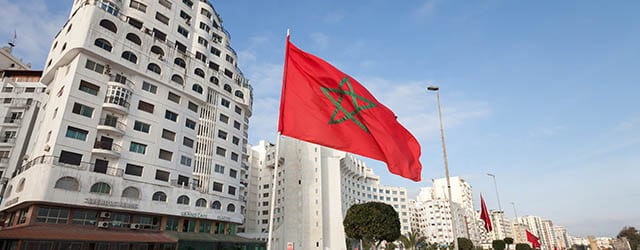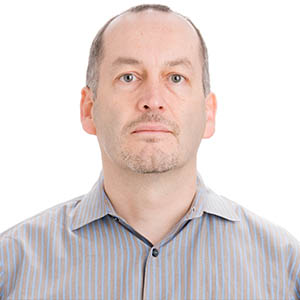With a diversified economic base and improving fundamentals, Morocco has a sound fiscal strategy and well-thought-out reform program to cut red tape and boost trade. But further reform, says the IMF, is needed.

Against a backdrop of widespread political and economic volatility in North Africa, Morocco stands out for its stability. It is, by far, the country least affected by the turmoil of the Arab Spring. Unlike most of its neighbors, it enjoys a positive outlook. Solid, though not earth-shattering, growth and sound policies over the years have shored up the country’s fundamentals, and its economy today boasts a diversified base, booming trade and a deepening banking system. Now Morocco aims to build upon this foundation to become a prime financial center in the region.
“The overall macroeconomic fundamentals of the Moroccan economy are improving from year to year,” says Mamoun Tahri-Joutei, an economist with BMCE Bank, a commercial bank in Morocco. “GDP growth is expected to reach more than 4% in 2015, thanks to renewed dynamism of the industrial and services sectors and a good harvest.” The upbeat news extends to the fiscal deficit, which has been declining because of the reform of the country’s costly food and energy subsidies policy. The gap is expected to shrink to about 4.5% this year. The current-account deficit has also been on the mend, and international reserves have increased to cover about five months of imports. Inflation has been under control for a decade and is expected to remain low, around 1.5% this year.
OIL PRICE BOON

Surpsingly, one of Morocco’s strengths is its dearth of oil wealth. Over the years, the lack of fossil fuels has compelled the nation to develop a wide range of industries. “Morocco has mineral resources and an [agricultural sector] that is getting more and more diversified,” says Jean-Francois Dauphin, division chief of the IMF’s Middle East and Central Asia department. “It also has traditional industries—for instance, textiles—as well as some newly developed ones, like the car industry, aeronautics, but also electronics. Then there are services: The banking and telecom sectors, in particular, are quite vibrant.” The country’s central bank calculates that the annual long-term growth of nonagricultural sectors has been in the 5% percent range.
Morocco’s lack of large oil deposits has also shielded it from the negative effects of the decline in energy prices over the past few months. “In fact, we have benefited from it because we import all of our needs,” says Touhami Abdelkhalek, professor at the National Institute of Statistics and Applied Economics in the capital Rabat. Lower oil prices could help the country in yet another, indirect way: by aiding the economic recovery in the European Union, Morocco’s largest trading partner.
Authorities are increasingly looking to tap into these assets to boost exports, which have been buoyed by the recent signings of many free-trade agreements between Morocco and its main commercial partners, including Europe, the US, Turkey, several Arab countries and West Africa, says Tahri-Joutei. In light of the difficulties experienced by EU member-states and neighboring countries, the key, going forward, will be to explore newer and more-distant markets. “We must develop an export strategy targeted to other countries in Africa and some in Asia, especially big ones like China and Russia,” says Abdelkhalek. “These could be good markets for our phosphate and agricultural products.” He cites a new free-trade agreement being negotiated with Canada and suggests that another with Brazil might be possible.
The government has also made strides in attracting more foreign direct investment and enticing multinational corporations to do business in Morocco, using it as a launch pad into the Middle East and sub-Saharan Africa. “The business environment has improved quite a bit,” says Dauphin. “This results from streamlining Moroccan procedures—essentially, cutting red tape.” In the latest Ease of Doing Business ranking by the World Bank, Morocco ranked 71 out of 189 economies. The year before, it came in at 87.

Supporting these efforts is a healthy banking sector, especially when viewed in the regional context. “Its business model relies on domestic deposits for funding, and that has proven very helpful during the global financial crisis because it helped insulate Morocco,” says Dauphin. He adds that the banking sector is quite deep compared with others in the region, providing better access to capital—though that’s truer for large enterprises than for small and medium-size ones and households. According to data from Tahri-Joutei, over the past decade the total balance sheet of Moroccan banks has tripled, while equity has quadrupled and net income has doubled. He attributes the improvement to “better risk management,” citing a 60% decline in the loss ratio. The penetration of banks has also increased. About 60% of Moroccans now have bank accounts, up from 24% in 2002. At the same time, a number of Moroccan banks have successfully expanded abroad, particularly in sub-Saharan Africa. This represents both an opportunity and a challenge.
A new banking law is being enacted in 2015 with the goal of strengthening the supervisory and regulatory role of Bank Al-Maghrib, Morocco’s central bank. The law also lays out a new framework for participatory, or Islamic, finance. “Several studies have shown a high potential for participative banking in Morocco,” says Tahri-Joutei. “With the sukuk market developing, we expect to see a rapid increase of participative banking in both corporate and treasury and investments assets.”
Though things are looking up, more work is needed. Unemployment is around 10% and much higher among young people. The education system isn’t doing a good enough job of equipping students with the skills needed in the job market. The pension system is strained, and reform proposals by the government have met strong resistance thus far. Likewise, the investment climate still has a ways to go to fully unleash the country’s competitiveness. “More needs to be done to further improve transparency, competition and governance and address corruption,” says Dauphin, “all of which has been identified as a key impediment to doing business in Morocco.” The IMF would also like to see a greater reduction in the country’s fiscal deficit to help bring the public debt more firmly under control and argues that a more flexible exchange rate regime would help the Morocco deal with external shocks. The possibility of such shocks is real, and could come in the form of stagnation in Europe or a sudden increase in energy prices.
GFmag.com data Summary: Morocco
Central Bank: Bank of Morocco |
|||
|---|---|---|---|
|
International Reserves |
$19.3 billion |
||
|
Gross Domestic Product (GDP) |
$112.5 billion* |
||
|
Real GDP Growth |
2012 |
2013 |
2014* |
|
GDP Per Capita—Current Prices |
$3,392.273* |
||
|
GDP—Composition By Sector* |
agriculture: |
industry: |
services: |
|
Inflation |
2012 |
2013 |
2014* |
|
Public Debt (general government |
2012 |
2013* |
2014* |
|
Government Bond Ratings |
Standard & Poor’s |
Moody’s |
Moody’s Outlook |
|
FDI Inflows |
2011 |
2012 |
2013 |
* Estimates
Source: GFMag.com Country Economic Reports



